Pricing Proposal
Pricing proposal templates provide a professional structure to present detailed costs, highlight value, include terms, showcase testimonials, and offer flexible, personalized pricing options with clear CTAs for client engagement.
Key Elements of a Pricing Proposal
Tips for Crafting Effective Proposals
Updated: Dec 20, 2024






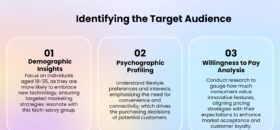

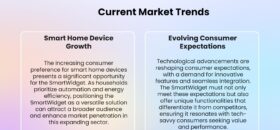


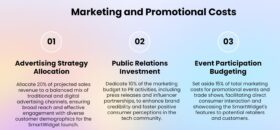

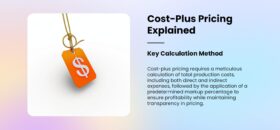


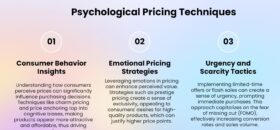



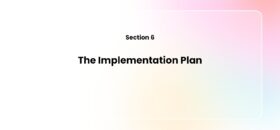




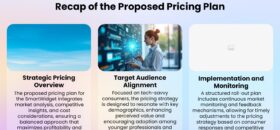


Discover similar templates
Grant Proposal Templates
Grant proposal templates provide a structured framework to emphasize project purpose, justify needs with data, detail methodologies, budgets, and team expertise, and highlight sustainability and long-term impact while adhering to grantor...
Project Proposal Templates
Project proposal templates provide a strategic framework to align goals, objectives, and methodology with organizational priorities. They highlight deliverables, timelines, resources, and success metrics, ensuring clarity and stakeholder...
Consulting Proposal
Consulting Proposal Templates provide a clear action plan to address client challenges. Include an executive summary, problem statement, solution, scope, pricing, qualifications, and call-to-action to demonstrate expertise and build...
Summary
A pricing proposal is a critical document that outlines the costs and value of a product or service clearly. Key elements include a detailed cost breakdown, highlighting value, customized pricing options, terms and conditions, and customer testimonials. Tips for effectiveness involve using clear language, visualizing pricing structures, explaining value propositions, offering flexible pricing, personalizing the proposal, outlining detailed terms, showing social proof, summarizing key points with a CTA, maintaining professional design, and having a follow-up strategy.
Outline
- The Introduction
- The Market Analysis
- The Cost Analysis
- The Pricing Strategies
- The Recommendation
- The Implementation Plan
- The Conclusion
Tips for Crafting the Pricing Proposal
A pricing proposal is a critical document that outlines the costs and value associated with a product or service. It aims to present a clear, transparent, and compelling case for why your pricing is justified, helping prospects make an informed decision. Compared to other pitch decks, a pricing proposal should focus on demonstrating value, cost breakdowns, and the benefits of choosing your product or service.
The pricing proposal should include the following key elements:
1. Detailed cost breakdown:
Clearly itemize the costs involved, showing transparency.
2. Highlight value:
Show how the pricing aligns with the value provided.
3. Customized pricing options:
Offer different packages or tiers to cater to various customer needs.
4. Terms and conditions:
Outline payment terms, discounts, and any other conditions.
5. Customer testimonials or case studies:
Provide proof of previous success and satisfaction.
6. Summary and call-to-action:
Recap the key points and guide the customer on the next steps.
Here are several additional tips for making a pricing proposal effective:
1. Use Clear and Simple Language:
Avoid jargon and complex terminology.
Ensure that potential clients can easily understand the proposal without confusion.
2. Visualize the Pricing Structure:
Use tables, charts, and graphs to break down the pricing structure.
Highlight different packages or tiers visually for easy comparison.
3. Explain the Value Proposition:
Clearly articulate the benefits and value that justify the pricing.
Link each cost to a tangible benefit or outcome for the customer.
4. Offer Flexible Pricing Options:
Provide multiple pricing models, such as subscription, one-time purchase, or pay-per-use.
Include discounts or incentives for longer commitments or larger volumes.
5. Personalize the Proposal:
Tailor the proposal to address the specific needs and pain points of the prospective client.
Reference previous conversations or insights gathered about the client’s situation.
6. Provide Detailed Terms and Conditions:
Clearly outline payment terms, conditions, and any applicable warranties or guarantees.
Address potential concerns upfront to prevent misunderstandings.
7. Show Social Proof and Credibility:
Include testimonials or case studies from satisfied customers.
Highlight awards, certifications, or notable partners to build trust.
8. Summarize Key Points and CTA:
End with a concise summary of the proposal’s key points.
Include a clear call-to-action, guiding the customer on how to proceed (e.g., signing the contract, scheduling a follow-up meeting).
9. Professional Design and Formatting:
Ensure the proposal looks professional with consistent branding.
Use a clean layout, easy-to-read fonts, and high-quality visuals.
10. Follow-Up Strategy:
Outline the next steps after delivering the proposal, including a follow-up timeline.
Be ready to address additional questions or concerns the customer may have.
By focusing on these elements and tips, a pricing proposal can effectively communicate your value proposition, align expectations, and move prospects closer to making a decision.




